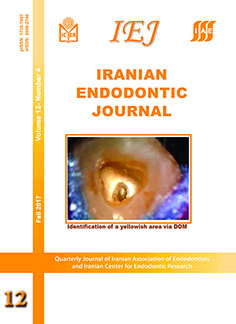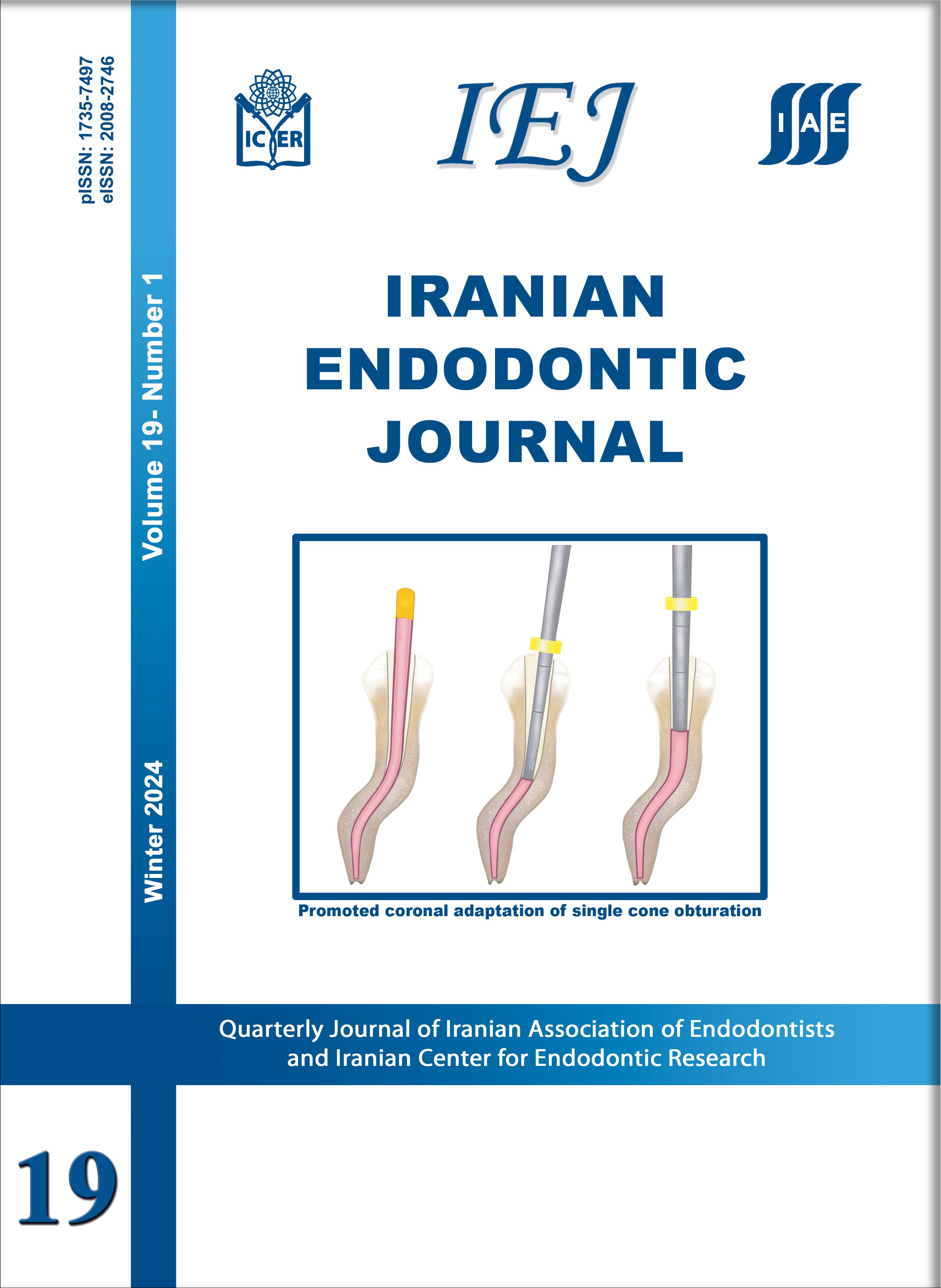Clinical Approach to Pulp Canal Obliteration: A Case Series
Iranian Endodontic Journal,
Vol. 12 No. 4 (2017),
10 October 2017
,
Page 527-533
https://doi.org/10.22037/iej.v12i4.18006
Abstract
This article describes four cases with safe and feasible clinical treatment strategies for anterior teeth with pulp canal obliteration (PCO) using cone-beam computed tomography (CBCT), digital radiography (DR), dental operating microscopy (DOM) and ultrasonic tips (US). Four anterior teeth with PCO were chosen. DR was taken with different angulations and analyzed with different filters. Subsequently, the access cavity was performed with the aid of DOM. If the canal was not identified, CBCT was requested. Sagittal and axial slices guided the direction of the ultrasonic tips. After identification of the canal, it was then negotiated and instrumented with the rotary instruments. All four canals were successfully identified, with no complications. In case 1, the canal was identified using DR, DOM and US tips. In cases 2, 3 and 4, the canals were identified with DR,DOM,UStips and CBCT. Complete root canal obliteration identified in radiography did not necessarily mean that pulp tissue was not visible clinically, either. The clinical evaluation of the access cavity with the aid of MO was crucial. If the canal was not identified, CBCT was mandatory in order to show more detailed view of the precise position of the canals, their directions, degrees of obstruction and dimensions. It served as a guide for the direction of the ultrasonic tips to keep them within the pulp chamber safely, with a low risk of iatrogenic injury.
Keywords: Cone-beam Computed Tomography; Dental Operating Microscope; Digital Radiography; Guided Endodontics; Pulp Canal Obliteration; Ultrasound
How to Cite
- Abstract Viewed: 1861 times
- PDF Downloaded: 3350 times




